.
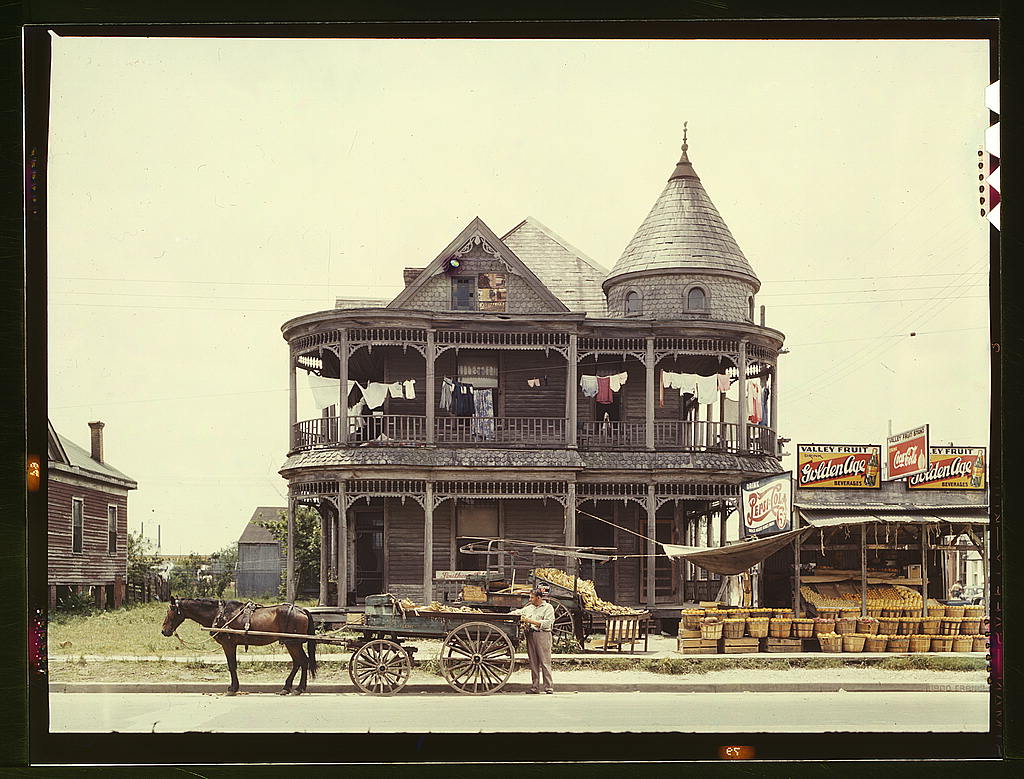
House, Houston, Texas: photo by John Vachon, May 1943 (Farm Security Administration/Office of War Information Collection, Library of Congress)
What
words would the wood remember, if the wood could remember words? Would
the wood remember what was said in this old house of words forever lost,
where I wanted to live, in the immaterial wood of the mind, when
immobilized, remembering the picture without having it before me, but
recalling it to the mind's eye, as a kind of meditation, lying on the
metal table, under the bright light, in the passage over the bridge
between worlds, the ruinous world to come and the world already ruined
and left behind, those fossil worlds, those petrified woods, those stone
worlds made of dead wood and dried blood and the ruins of historical
time -- these pitiful reminders of mind, these unintelligible echoes of
words, these woods of inarticulate echoes, in which everything is heard
twice, and then again heard, for a third time? Who is that third who
walks beside? Who is the third who walks always beside you? When I count, there are only you and I together, but when I look ahead up the white road there is always another one walking beside you, gliding wrapt in a brown mantle, hooded
I do not know whether a man or a woman, but
who is that on the other side of you? Would the wood open itself and
remember the words it kept close through all that long unremembered time,
hidden in the rings of its growth, if the light grew bright enough to
finally blind, past returning, and there were no one left to walk
beside, only the one, the one walking over the bridge between the worlds
that are no longer real, in the dark wood, under the
bright light of
the black world in which there are no words left to be said, no words to
be heard, only the noise of the technicians busying themselves with
inconsequential things, the low hum of the machine passing over the
body, capturing axial slices like tree rings, from the Greek tomos slice
and graphein to write, images of materials simulated on a transverse
plane, things which if they were ever real are real no
longer, matters which if they were ever material are now as immaterial
as mind, in the bright black blinding irradiated world of words which
now no longer matter?
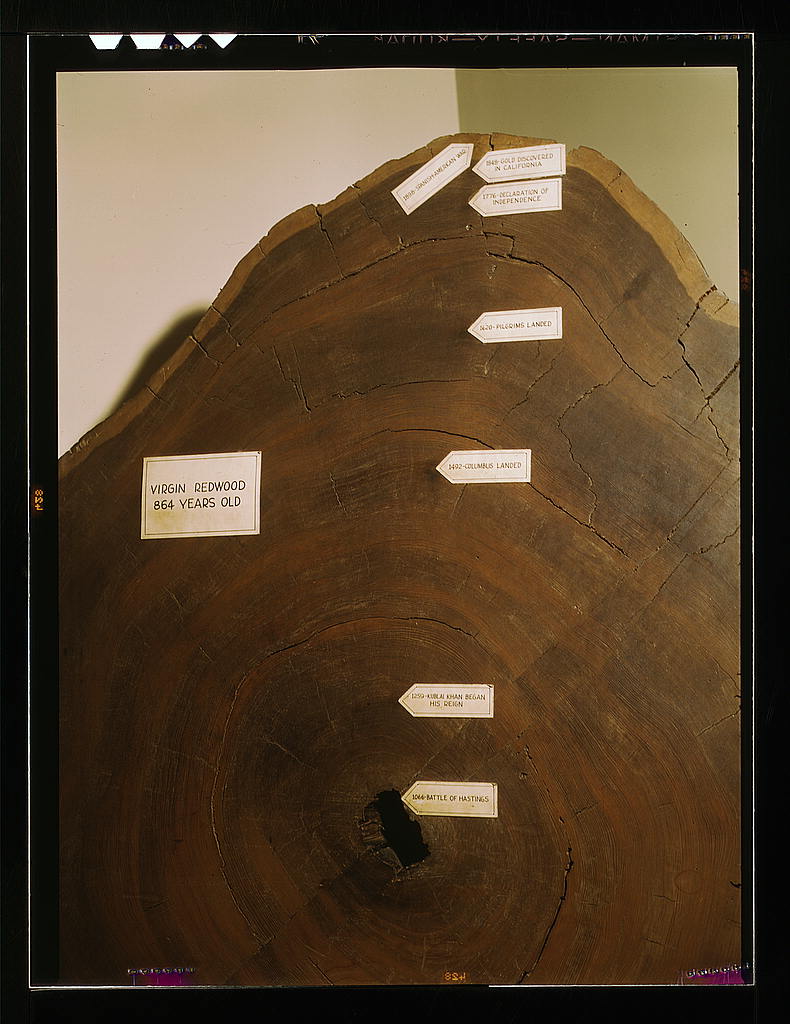
Virgin redwood, 864 years old: photo by John Vachon, 1942 (Farm Security Administration/Office of War Information Collection, Library of Congress)

A Giant Sequoia log, Generals Highway, Three Rivers, Tulare County, California: photographer unknown, no date (Library of Congress)
Polished slice of petrified tree from Arizona, containing homesteads and remains of living things from Late Triassic (c. 230 million years ago): photo by Michael Gäbler, 2009

Bole of a freshly felled cultivated Sequoiadendron giganteum (aka Redwood or Giant Sequoia) about 100 years old, Auvergne, France: photo by Jastrow, 1 November 2005

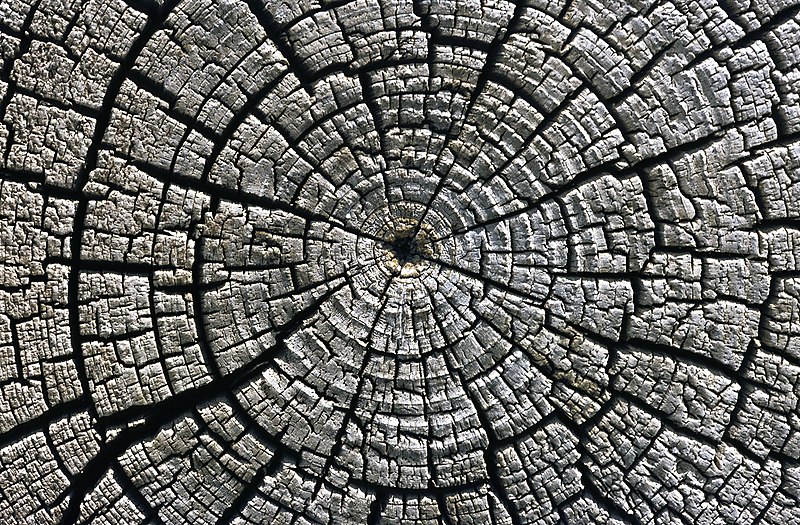
Weathered growth rings in a horizontal cross section cut through an tree felled around AD 1111 used for the western building complex at Aztec Ruins National Monument, San Juan County, New Mexico: photo by Michael Gäbler, August 1978
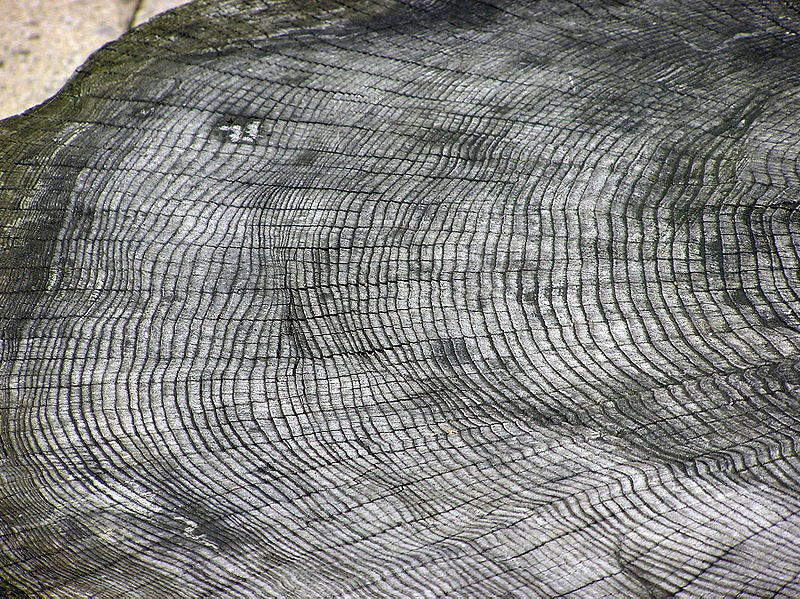
The growth rings of an unknown tree species, at Bristol Zoo, Bristol: photo by Adrian Pingstone, September 2005
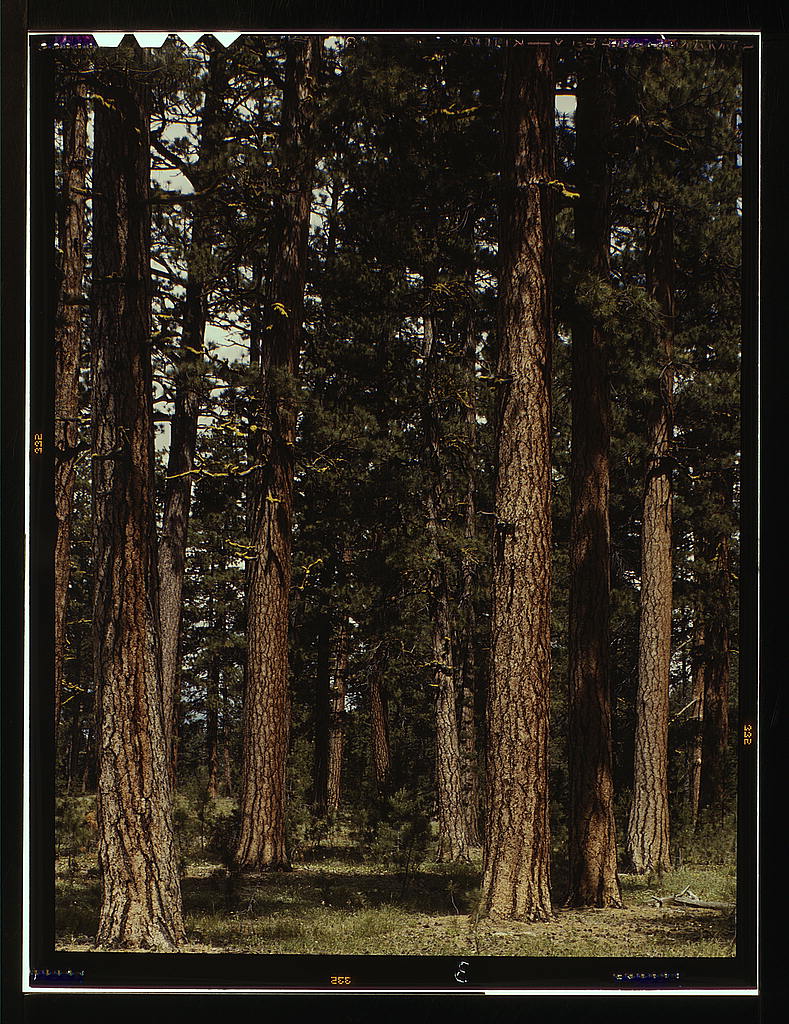
Stand of virgin Ponderosa pine, Malheur National Forest, Grant County, Oregon: photo by Russell Lee, July 1942 (Farm Security Administration/Office of War Information Collection, Library of Congress)


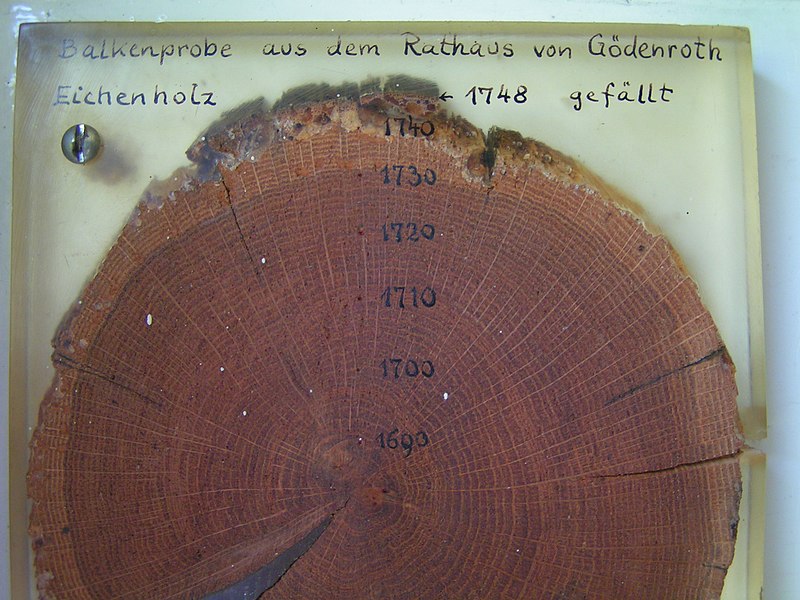



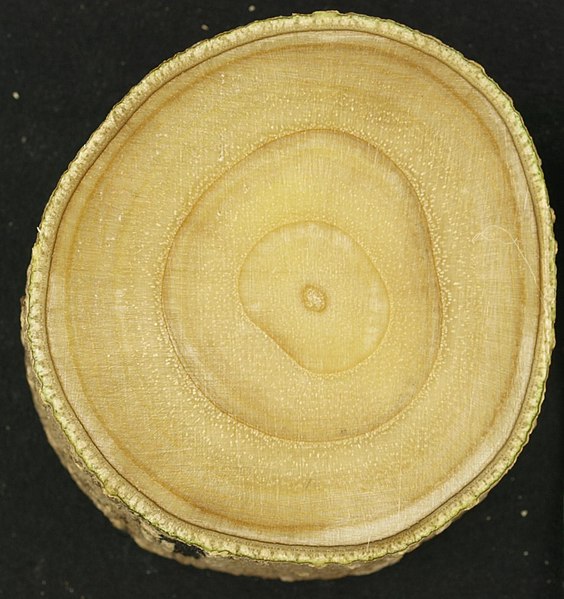




Tom,
ReplyDelete"What words WOULD the wood remember, if the wood could remember words?" [-- that is the question] . . . Images of materials simulated on a transverse plane."
5.19
light coming into sky above still black
ridge, song sparrow calling from branch
in foreground, wave sounding in channel
in place of these, this way
expressed in terms of
length of the arc, measured
line, where following
silver of sunlight reflected in channel,
cloudless blue sky to the left of point
"What words WOULD the wood remember...?|
ReplyDeleteNone probably,
it's been so long since its one and only work came out
I truly believe the wood remembers words. Interesting to me that as fine, apprpopriate and meaningful as all the other images are, the Vachon says everything. Curtis
ReplyDeletemasterpieces of art...!!!
ReplyDeleteOn the one hand, I agree completely with Curtis.
ReplyDeleteOn the other hand, no, Conrad, that old house in Houston would probably not remember the story of how it once grew, was chopped down, sawed, milled, hammered together so as to then again to begin slowly rotting and returning to nature, all without a single word.
But (and not that in this domain intentions matter any more than words, really) I did not mean to be personifying the wood by narratively placing it on that metal table. (That I believe would be a form of surrealism, perish the wooden thought.)
What I suppose I meant to be conveying, in this curious notebook entry made literally in the dark, a few days after the event, was an approximation of the sensations on the part of a seriously injured human being, undergoing, over a period of some eight hours, in the setting of the triage unit of a major hospital trauma center, a series of four separate CT scans, or tomographic imagings.
In the course of such a procedure the body is virtually sectioned, in axial and transverse slices (Gk tomos=slice, graphein=write).
So that's what it was: I was imagining, there on the metal table, what a tree might feel like, being sectioned, and (as should be obvious from this), I literally had no words for it.
The fact that each such scan irradiates one much as might a dip in the Fukushima #4 Reactor cooling pond might also be a footnote.
These footnotes make one feel a bit overserious however. Eliot and Empson got away with it. But then one might make the claim they were in their right minds.
These words I'll remember. The distillation of experience. Beautifully rendered. The pictures add much.
ReplyDeleteTo know somebody still has a memory: a consolation, a reward inscribed in the trunk of any one of the citizens of the old-growth, ossified, bootleggers'-still-hidden-deep-in-the-backwoods section of the forest.
ReplyDeleteReally, really fascinating and thank you for further elucidating. Our family had been (thankfully) a long time removed from hospital thoughts and experiences until early last month when Caroline required serious emergency surgery. (Everything's fine now; we feel back on track, although changed by the episode.) This is really beautifully imagined and expressed/rendered. Curtis
ReplyDeleteBeautiful poetry worthy of the gift given us by the resinous, remembering wood.
ReplyDeleteTC,
ReplyDeleteYou can tell how old I am by the rings around my eyes!
Kidding...wonderful selection.
They resonate, reminding me of the old photos that captured the spirit of my family of Oregon loggers.
TS
Beautiful, and yes, I think wood remembers and the air between walls . . . wooden or not . . .
ReplyDeleteSuch a beautiful and moving meditation.
I am thinking of those hospital, life-threatening moments and that blinding light and that feeling of abstraction and almost an intimacy with the abstraction that happens . . .
Amazing, brilliant. Thank you.
The first thing I thought of when I saw that picture of the wooden house was another wooden house in the small, west coast town where I grew up, a two-story Victorian-style mansion complete with attic, which was at the end of a dead-end street parallel to ours; a mere 500 or so yards away if we followed the train tracks which went past both houses. It was 1955 and it had been abandoned many years prior to that and remained a dark mystery to me. One day, I got two of my buddies and we found a way to enter it—trespassing, I know—but I will never forget how sad I felt at seeing so many things left behind by the owner(s)—desks, tables, lamps, armchairs, sofas, books—what had happened here? I never found out but before the decade was over, the house and all its furnishings had vanished.
ReplyDeleteAs Nin says, “a beautiful and moving meditation,” Tom.
There's a feeling wooden structures have. A sense of history. I remember the 1940s as being made of wood and bricks and asphalt.
ReplyDeleteTo feel empathy with the sliced tree, curious thing. After all it had been killed before being sectioned, a relief in that the violation of the living tissue had ceased before the sectioning. Though too, there is sap in freshly sectioned slices.
The slicing up of the body by x-ray computed tomography is a relatively new technology. Each individual vertical slice that goes into the projection is an individual shot, like frames in a movie. Each shot is a dose of radiation. The numbers of rads add up very rapidly. So do the costs of the procedure. A scan can run up to $6000. When you cede control over your own body in an ER triage setting, you can, without any act of volition on your part, be wheeled up and down labyrinthine corridors all night from surgery to scan, to scan again, with some scans having to be repeated ("you breathed!), some indecisive results, repeat performances sent by computer to other computers in Australia (good onya, mate) for high resolution analysis & c & c.
Tomography scares me as a word, it's the tomahawk in it I guess. Think of the word avulsion and imagine a tomahawk planted in between the bark and the trunk of a tree.
The word tomography is derived from the Greek tomē ("cut") or tomos ("part" or "section") and graphein ("to write").
But like "they" say, always coulda been worse. Lately as a form of pseudo-meditation I've been considering the fate of this kid who lost his head entirely.
Tom,
ReplyDeleteThe tomahawk of tomography taking slices of your body, Donald R. Currey boring into the bristlecone pine (then taking a chainsaw to it), what would old Prometheus have said about this? (We are grateful that you have thought to say it.)
Cross secton
ReplyDeleteoak
redwood
bristlecone pine
map to
should I say
the human heart? If you stare
at these they become
maps to follow.
i am the knots. i know it, somehow.
ReplyDelete